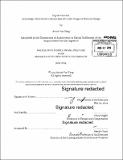| dc.contributor.advisor | Terry Knight. | en_US |
| dc.contributor.author | Tang, Annie Yue | en_US |
| dc.contributor.other | Massachusetts Institute of Technology. Department of Architecture. | en_US |
| dc.date.accessioned | 2015-01-05T20:01:25Z | |
| dc.date.available | 2015-01-05T20:01:25Z | |
| dc.date.copyright | 2014 | en_US |
| dc.date.issued | 2014 | en_US |
| dc.identifier.uri | http://hdl.handle.net/1721.1/92644 | |
| dc.description | Thesis: S.B., Massachusetts Institute of Technology, Department of Architecture, 2014. | en_US |
| dc.description | Cataloged from PDF version of thesis. | en_US |
| dc.description | Includes bibliographical references (pages 42-43). | en_US |
| dc.description.abstract | It is without a doubt that color is one of the most important and distinctive features of any physical or digital product. With the expansion of the world wide web and increasingly new digital media and online technologies, the color choices that web designers make become a forefront of discussion. A well-designed color palette improves a web page's visual aesthetic and facilitates user interaction. In spite of the wealth of information currently available for designing websites, it is not easy for web designers to create cultural and industry appropriate color selections and determine the best usage for color on a webpage. This thesis project addresses these concerns in two parts. In the first part, a color analysis tool ("Palettes") is created to collect data on how colors are being used in existing websites. The abilities of Palettes include finding 1) the full spectrum of colors used on a website, 2) the percentage of each color on the page, 3) the CSS properties of each color, and 4) the HTML classes or ID associated with each color. In the second part, a semi-automated empirical study of approximately 2,000 websites across 24 countries and 12 different industry-related categories was conducted using this tool. From the pilot study, it can be seen that the primary usage of a website's main colors are in highlighting "action" features, such as buttons and links. Results also show that certain colors can be identified as universally used in website design for all countries and categories studied, but culture-specific and industry-specific palettes can also be identified. Examples of "preferred" palettes are presented along with suggestions on how designers can work with such palettes. | en_US |
| dc.description.statementofresponsibility | by Annie Yue Tang. | en_US |
| dc.format.extent | 43 pages | en_US |
| dc.language.iso | eng | en_US |
| dc.publisher | Massachusetts Institute of Technology | en_US |
| dc.rights | M.I.T. theses are protected by copyright. They may be viewed from this source for any purpose, but reproduction or distribution in any format is prohibited without written permission. See provided URL for inquiries about permission. | en_US |
| dc.rights.uri | http://dspace.mit.edu/handle/1721.1/7582 | en_US |
| dc.subject | Architecture. | en_US |
| dc.title | Digital palettes : assessing cultural and industry specific color usage in website design | en_US |
| dc.title.alternative | Assessing cultural and industry specific color usage in website design | en_US |
| dc.type | Thesis | en_US |
| dc.description.degree | S.B. | en_US |
| dc.contributor.department | Massachusetts Institute of Technology. Department of Architecture | |
| dc.identifier.oclc | 898125250 | en_US |
